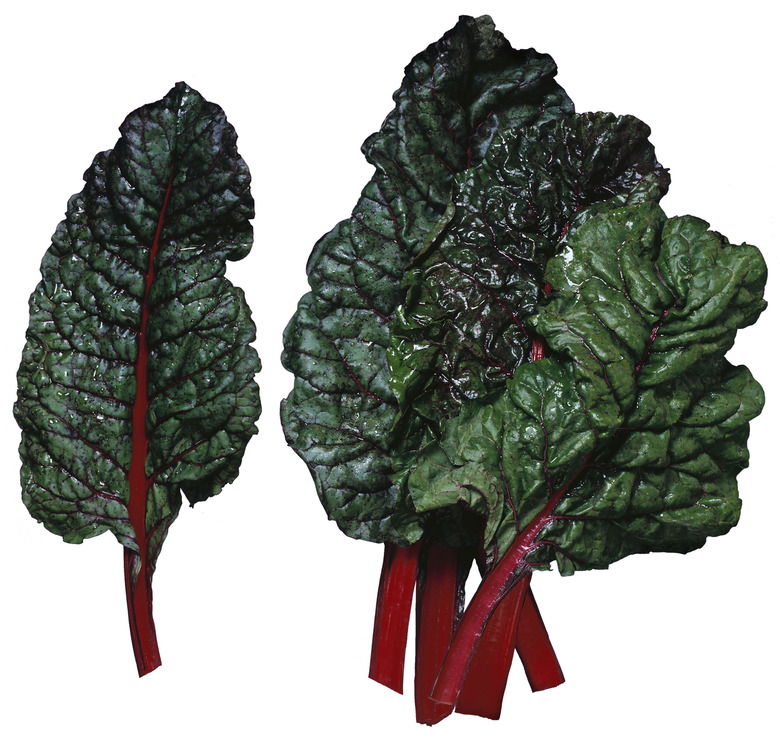Rhubarb Plant Vs. Swiss Red Chard Plant
The distinctive red stems of rhubarb (Rheum rhabarbarum) can add a tart flavor to pies, while the leaves of Swiss red chard (Beta vulgaris) are often used as an alternative to spinach in salads. You can grow rhubarb as a perennial in U.S. Department of Agriculture hardiness zones 4 through 7, but Swiss red chard has a bi-annual growth habit that requires replanting once every two years. Unlike Swiss red chard, rhubarb leaves are moderately toxic due to the presence of oxalic acid.
Step 1
Rhubarb plants require a period of winter dormancy that ends when the average daily temperature exceeds 40 degrees Fahrenheit. You can grow rhubarb from seeds or using vegetative propagation. The most common way to propagate rhubarb is from crown divisions taken from an existing plant. This method eliminates the variations in appearance and quality that occur when you plant rhubarb from seed. The best place to plant your rhubarb is in open areas where it can receive full exposure to sunlight in a fast-draining soil. Avoid planting rhubarb near large plants such as trees or shrubs to reduce competition for resources.
Harvesting Rhubarb
Step 1
The best time to harvest your rhubarb stalks is in the second or third year of your plant's growth. The larger your plant is, the earlier you can begin harvesting it, but in most cases rhubarb is not ready for harvest during its first year. This timetable allows your plant time to establish a root system and ample growth. During the first harvest it is best to limit your harvesting to a four-week period during the early summer to avoid weakening the plant. You can safely extend your harvesting period to eight to 10 weeks during subsequent years without harming the long-term health of your plant. The best time to harvest your rhubarb stalks is when they are 10 to 15 inches long. You can store harvested stalks in your refrigerator for two to four weeks.
Step 2
- Rhubarb plants require a period of winter dormancy that ends when the average daily temperature exceeds 40 degrees Fahrenheit.
- The best place to plant your rhubarb is in open areas where it can receive full exposure to sunlight in a fast-draining soil.
Chard Cultivation
Step 1
Chard is a bi-annual plant that grows well in areas with full sun or partial shade and a fast-draining soil. It thrives in loamy soils with a pH between 6 and 7 that are heavy in organic matter. Swiss red chard needs regular irrigation since its quality suffers during periods of drought. It takes roughly 50 to 60 days from planting for chard to grow large enough to harvest. At its mature size you can expect your Swiss chard to reach 1 to 3 feet. Red varieties of Swiss chard that are exposed to frost often go to seed quickly. Plant your Swiss red chard after the final frost of the spring.
Step 2
- Chard is a bi-annual plant that grows well in areas with full sun or partial shade and a fast-draining soil.
- Red varieties of Swiss chard that are exposed to frost often go to seed quickly.
Picking Chard
Step 1
You can harvest your chard plants once the leaves are large enough to provide a usable harvest. There are two main ways to harvest Swiss red chard. You can prune the younger outer leaves periodically as you need them or you can harvest the entire plant. The best method for harvesting whole Swiss red chard plants is to sever the stem 1 to 2 inches above the soil so that it can produce new leaves. You can also cut back older plants at 3 to 5 inches above the ground to encourage flushes of tender new leaves.
